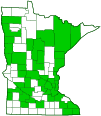Pseudomonas syringae pv. tagetis (Pst)
A pathogen of Asteraceae
Conservation • Description • Hosts • Ecology • Use • Distribution • Taxonomy
Conservation Status |
|||
| IUCN Red List | not listed |
||
| NatureServe | not listed |
||
| Minnesota | not listed |
||
Description |
Pseudomonas syringae pv. tagetis (Pst) is a common plant-pathogenic bacterium that occurs globally. It is most reported in Europe, eastern Asia, Australia, New Zealand, and North America. In North America, Pst is most encountered in the field on Canada thistle, but it infects several plants in the aster (Asteraceae) family. It was first reported in Denmark in 1955 as a disease of African marigold (Tagetis erecta). Since then, it has been isolated from a number of plants in the aster (Asteraceae) family. Although several common names for this bacterium have been used, none are widely recognized. The acronym "Pst" is often used in academic papers, but it can stand for many other things. The term "apical chlorosis" is a symptom that can be caused by other plant pathogens or even nutrient deficiencies. The term "apical chlorosis of Canada thistle" ignores that this bacterium infects several plants in the Asteraceae family. For instance, the pathovar epithet “tagetis” refers to the marigold species, Tagetes erecta, which is another plant it infects. Using the full scientific name Pseudomonas syringae pv. tagetis avoids confusion and ensures scientific accuracy. Outside of a laboratory, a bacterium is usually recognized by the symptoms it produces in its host. Pst produces the substance tagetitoxin, which inhibits bacterial RNA polymerase, affecting chloroplast development and preventing photosynthesis. This results in whitened plant growth (chlorosis) on only the upper portion of the plant, stunted growth, fewer shoots, and inhibition of flowering. Studies indicate that tagetitoxin may have potential as a natural herbicide. It has been investigated in Minnesota as a possible biological control of invasive Canada thistle. |
Similar Species |
Hosts |
Plants in the Aster (Asteraceae) family, including: Canada thistle (Cirsium arvense) cocklebur (Xanthium pensylvanicum) common dandelion (Taraxacum officinale ssp. officinale) common ragweed (Ambrosia artemisiifolia) common sunflower (Helianthus annuus) cup plant (Silphium perfoliatum var. perfoliatum) giant ragweed (Ambrosia trifida) Jerusalem artichoke (Helianthus tuberosus) lettuce (Lactuca sativa), specifically some cultivars. marigold (Tagetis spp.) safflower (Carthamus tinctorius) zinnia (Zinnia elegans) |
Ecology |
Season |
Symptoms most noticeable from June to September |
Use |
Researchers at the University of Minnesota conducted a study in 2002 to assess the viability of using Pst as a biological control agent for Canada thistle. |
Distribution |
||
|
Sources |
|
| 9/12/2025 | ||
Occurrence |
||
Common |
||
Taxonomy |
|
Kingdom |
Bacteria |
Phylum |
Proteobacteria |
Class |
Gammaproteobacteria |
Order |
Pseudomonadales |
Family |
Pseudomonadaceae |
Genus |
Pseudomonas |
Species |
Pseudomonas syringae (bacterial speck) |
Subordinate Taxa |
|
|
|
Synonyms |
|
|
|
Common Names |
|
apical chlorosis apical chlorosis of Canada thistle bacterial speck PST white‐colour disease of Canadian thistle (UK) |
|
Visitor Photos |
Share your photo of this fungus. |
||
This button not working for you? |
||
Dan W. Andree |
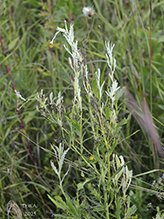 |
Whitish Thistle... Seen thistle with whitish areas on like this along a few rural roadside ditches and along the edge of Sandpiper Prairie SNA end of Aug. 2025. |
MinnesotaSeasons.com Photos |
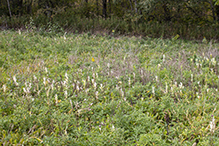 |
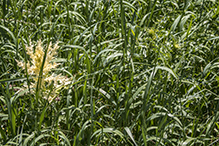 |
|
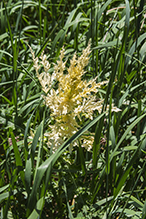 |
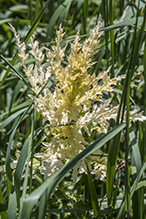 |
|
 |

Slideshows

Visitor Videos
Share your video of this fungus.
This button not working for you?
Simply email us at info@MinnesotaSeasons.com.
Attach a video, a YouTube link, or a cloud storage link.
Other Videos

Visitor Sightings |
Report a sighting of this fungus. |
||
This button not working for you? |
||
Dan W. Andree
Late August 2025
Location: Sandpiper Prairie SNA
Seen thistle with whitish areas on like this along a few rural roadside ditches and along the edge of Sandpiper Prairie SNA end of Aug. 2025.
MinnesotaSeasons.com Sightings |


